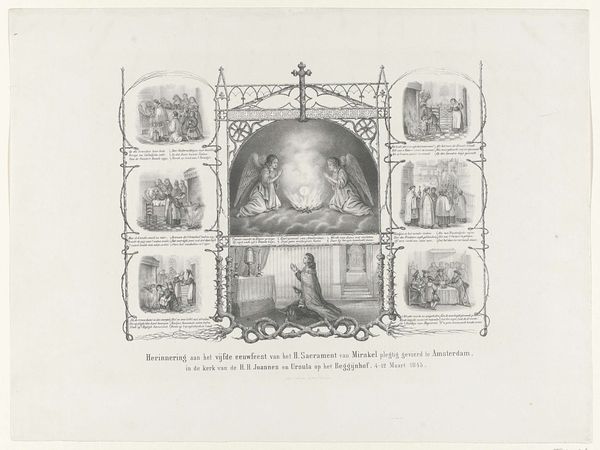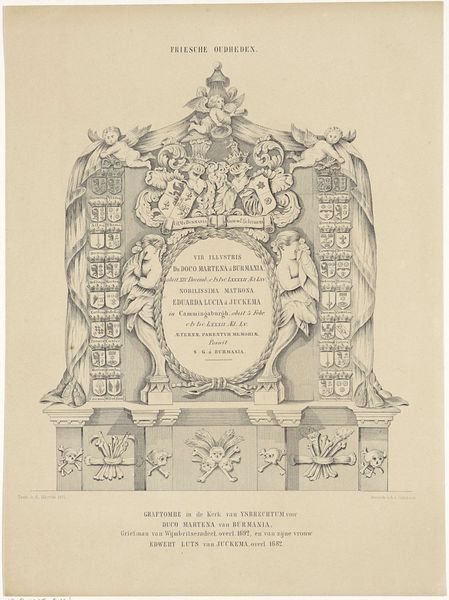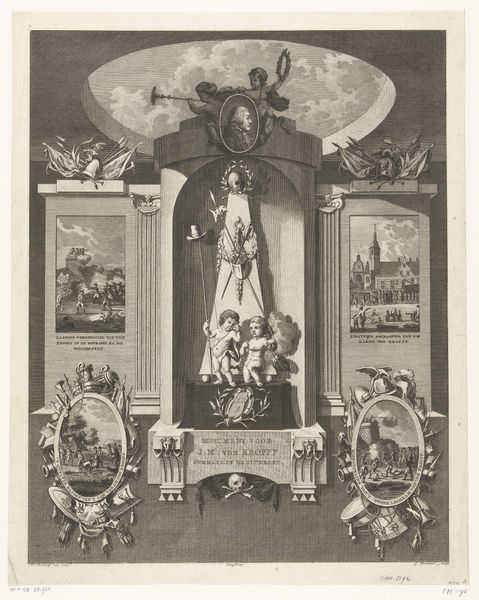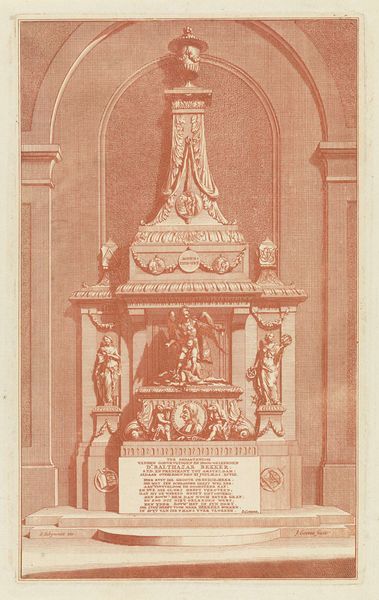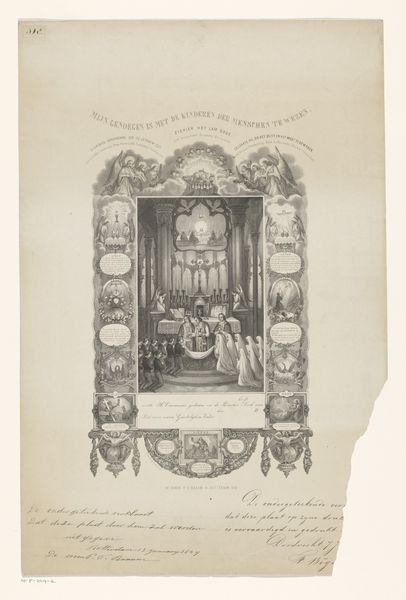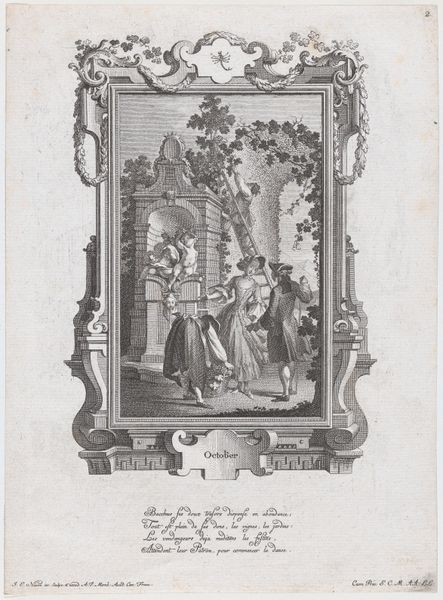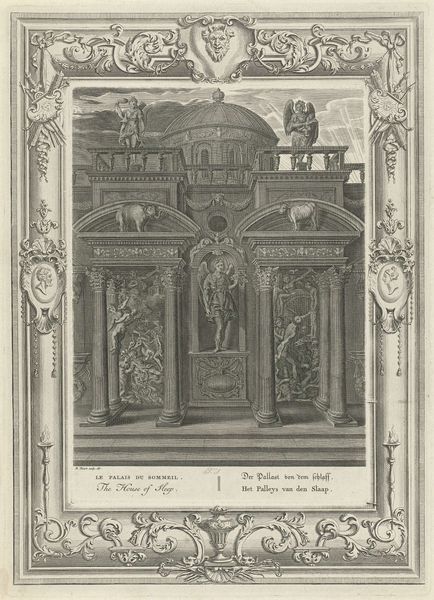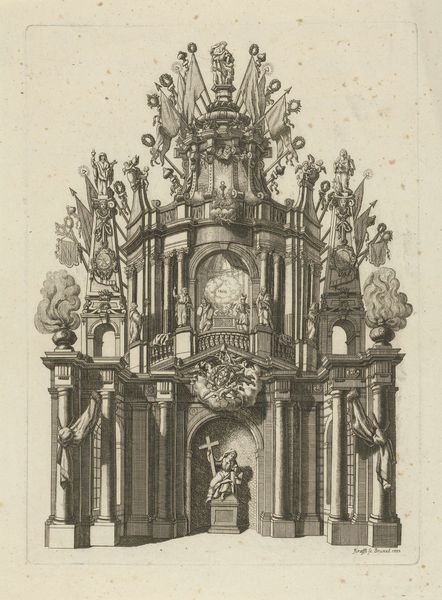
print, engraving
#
quirky sketch
#
pen drawing
# print
#
pen illustration
#
pen sketch
#
old engraving style
#
personal sketchbook
#
sketchwork
#
pen-ink sketch
#
pen work
#
symbolism
#
sketchbook drawing
#
history-painting
#
engraving
Dimensions: height 723 mm, width 550 mm
Copyright: Rijks Museum: Open Domain
Curator: This intricate print commemorates the 300th anniversary of the Relief of Leiden in 1874. It’s titled "Gedenkplaat bij het 3e Eeuwfeest van Leidens Verlossing 3 Oct. 1874". Editor: My first thought is "ornate." The design is so dense; a true monument on paper. It strikes me as a kind of Victorian information graphic, squeezed into this neo-Gothic architectural framework. Curator: Absolutely. Think about Leiden in the late 19th century: this was a period of burgeoning national identity and the construction of historical narratives. This print presents Leiden’s siege as a foundational myth for the city, and perhaps, even the nation. It served as a potent piece of historical representation for its community. Editor: I’m drawn to the engraving itself. Look at the fineness of the lines, and all the textures it renders! The production of these mass-produced prints – who was making them, and for what price? It reveals the growth of both visual culture and its industrial dissemination in that period. This was created with engraving, highlighting the material processes of image-making, where skill, labor, and technology converge to deliver narratives about heroic deeds. Curator: Yes, that's a critical point. Also consider the visual language; the way historical events are placed alongside portraits and symbolic objects. The placement of figures of justice, history, and allegorical ideals, such as on either side of the central historical image, is not random but intended to instill ideals and values. It represents how history itself is composed of many elements. Editor: I agree, it's deliberately didactic, reinforcing particular viewpoints through symbolic language. What interests me, as well, are the bottom panels portraying moments from the siege alongside celebratory images, revealing how labor was put into reproducing national values for wider circulation. How print makers were using etching in these works gives it this layered material history, deeply interwoven into collective identity formation during a crucial moment in Dutch history. Curator: Analyzing the visual and material components provides an invaluable lens through which to view how these events influenced not just politics and public sentiment during 1874's anniversary celebrations but, even more importantly, national identity formation. Editor: Indeed, understanding both helps unearth meanings within each impression: revealing a visual compendium intended both as art piece, celebratory tool – also serving function toward preserving certain accounts while other ones fade behind closed doors... It prompts thoughtful exploration along societal trajectories guided heavily since creation across many fields; an exercise worthwhile.
Comments
No comments
Be the first to comment and join the conversation on the ultimate creative platform.

